 Image search results - "us" Image search results - "us" |

Letter of Thanks from PhilI really enjoyed my first trip to Finland during September 4-18, 2005 (Sept. 8-17 in Kuusamo) and savored every hour. The people in Kuusamo were all so nice and it was a great pleasure to meet and see the work of many talented and dedicated photographers from Europe.
They have definitely piqued my interest and opened my eyes to the nature and wildlife in northern Europe and the Arctic region. I've also become much more keenly aware of the seriousness of global warming. People in Finland have told me how the climate has become noticeably warmer over the decades. Such countries near the polar regions are the first to feel and see the detrimental effects of global warming. I really hope we can someday reverse the trend.
I want to thank the people who made my sponsored trip and participation in Kuusamo Nature Photo 2005 possible and very enjoyable. After months of email correspondence with the festival staff, it was great to finally meet all of them face to face. It makes a big difference when you know the face and person behind the name.
I know they worked very hard to pull off a very successful nature photo festival. For all the email correspondence, coordination, and making all the arrangements, I especially want to thank the following:
Lassi Rautiainen, Kuusamo Nature Photo Director
Pekka Pirhonen, Kuusamo Culture Department Manager
Seija Väisänen
Hannele Pappila
Town of Kuusamo
Corporate sponsors
I also want to personally thank the following people:
Pirkko Väätäinen, my interpreter who interpreted my three slide shows into Finnish.
Hannu Hautala and wife Irma, for having us over at his home/office. Despite his fame, Hannu is a very down-to-earth and warm-hearted man. It was a great pleasure to meet him, to see his collection of Japanese photo books, and hearing about his two trips to Japan.
Barbara, for videotaping my slide shows with my video camera and taking some great snapshots of me enjoying myself in Kuusamo. And also for providing transportation to/from the airport.
Tõnu Ling, for taking snapshots of me in Kuusamo and being my first friend in Kuusamo (we met on the plane to Kuusamo).
Koillis sanomat newspaper and reporter Tuomo Pirttimaa for interviewing me in an article they published.
Again, I have to thank Lassi for everything. He was the one who took care of all the details even during our nature trips. Lending sleeping bags, carrying hot drinks in heavy thermos bottles, driving us all over the place, answering all our questions, taking pictures of us, and making sure everyone had an enjoyable time. He turned out to be quite humorous. I can highly recommend him to anyone who needs a very knowledgeable local guide to watch or photograph wildlife in Finland.
See his Web site: Articmedia
Finally, I want to thank all the people and photographers I met at Kuusamo for their pleasant company and friendship. Remember that you have a friend in Japan. If you ever come and visit, let me know.
Meanwhile, I hope you enjoy this permanent online gallery of Finland photos explained in both English and Japanese.
Philbert Ono
Tokyo, Japan
P.S. In case you don't know, "kiitos" means thank you in Finnish.
|
|
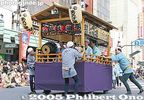
Sadly, the Tokyo Jidai Matsuri no longer held. It used to be held annually on Nov. 3 (Culture Day) in Asakusa, Tokyo.the Tokyo Jidai Matsuri (Festival of Historical Periods) is a parade tracing the history of Tokyo with over 1,600 people dressed in the respective period's costume. This is the lead float playing music. It took about an hour for the parade to reach Kaminarimon Gate.
Lead Float: Edo festival music played by children. Kodomo Edo-bayashi yatai
先導 子供江戸囃子屋台
|
|

Sign for boat going to the islands (no longer in service)
|
|
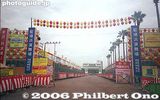
One of Japan's grandest festivals, the Tokushima Awa Odori is a summer dance performed in central Tokushima city. Numerous dance troupes called "ren" appear in a long parade along the city's main streets for four evenings in mid-Aug. About 2 million people see it during the four days it is held. It is like a bon dance to greet the souls of the deceased returning to visit. There are other Awa Odori festivals in Japan, but the one in Tokushima is the original and largest one. "Awa" is the former feudal name of Tokushima. Photo: Entrance to one of the spectator areas called "embujo" (admission charged). 藍場浜演舞場
|
|
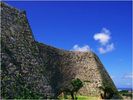
Nakagusuku Castle is part of a World Heritage Site of Okinawan gusuku castles. This is a view looking eastward from the base of the 3d enclosure (migusuku). Photos in this album all by Michael Lynch. Constructed in mid-fourteenth century of limestone rocks, placed without the use of mortar, Commodore Perry praised the construction technique on his visit to Okinawa in 1853.
|
|

Yasukuni Shrine is Japan's most prominent shrine for the war dead. Near Kudanshita Station on the Tozai Subway Line. This is the first giant torii
|
|

The Kusatsu Shukuba Matsuri Festival is held on April 29 to celebrate Kusatsu's history as a post town on the Nakasendo and Tokaido Roads. Numerous events and activities are held such as flea markets, street & stage performances, and Japanese danThis was the first time I saw hula dancing in Shiga. Surprised to see hula dancing (Kusatsu Station plaza).
|
|

On the Sunday before the second Monday of Jan., 33 hectares of a hill called Wakakusa-yama (seen in the distance here) next to Nara Park is burned at night.The burning hill looks more spectacular from afar, but we went up close.
|
|

Kanayama Jinja Shrine is a small shrine within the grounds of the Wakamiya Hachimangu Shrine near Kawasaki Daishi Station. On the first Sun. of April, it holds this now-famous Kanamara Festival nicknamed the Phallus or Fertility Festival. Festival starts at 11 am. But a large crowd was already there well before that time. Entrance to shrine on the day of the Kanamara Festival. (If you're below age 18, please leave now.)
|
|

Ryogoku Kokugikan sumo arena as seen from Ryogoku Station
|
|
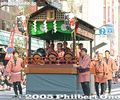
This page is a complete English guide to all the groups that appear in the parade. The parade assembles behind Sensoji Temple and starts at 1:30 pm from Nitenmon gate. The procession then goes down Umamichi-dori street, passes by Matsuya Department Store.先導 子供江戸囃子屋台
|
|

Rabbit Island
|
|
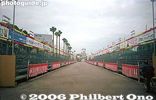
Spectator seats. Admission is 1,000 to 2,000 yen.
|
|

World Heritage Marker. Photo copyright 2009 Michael Lynch.
|
|

Path to shrine
|
|
|

Wakakusa-yama hill in JanuaryWakakusa-yama hill actually has three hills. We see only the first one here.
|
|

Shrine banners and cherries in full bloomThe red banner says "Kanayama Jinja" with an phallus (erect) logo on the top.
|
|

Crowd outside the Kokugikan await their favorite wrestlers.
|
|

From Matsuya Department Store, the procession turns right into Kaminarimon-dori street which passes in front of the famous, giant red lantern called Kaminarimon Gate. Lead float with Edo festival music played by children. 先導 子供江戸囃子屋台
|
|
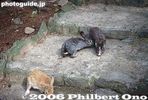
Rabbits
|
|
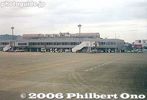
Tokushima Airport
|
|

Crowds already line Tokushima's main street soon to be closed to traffic.
|
|
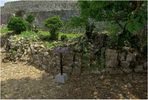
Sacred Site. There are eight special places of worship (Utaki) located within the castle walls. This view looks toward the East from the inside of the 1st enclosure. Photo copyright 2009 Michael Lynch.
|
|
|
|

The Kusatsu-juku Honjin is decorated with curtains. MAP
|
|

Dry grass ready to burn...
|
|

Pumping (or humping) the...
|
|

Crowd enters the Kokugikan for Musashimaru's retirement ceremony on Oct. 2, 2004.
|
|

Looks like Suganuma, another village in Gokayama area.
|
|

Lead float with Edo festival music played by children. The names of the children playing are written on the red lanterns hanging above. Kodomo Edo-bayashi yatai 先導 子供江戸囃子屋台
|
|

Feeding a rabbit
|
|

Tokushima Station
|
|

These photos were taken in Aug. 1999.
|
|
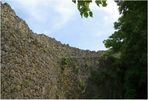
A view from the base of the West enclosure. Constructed in mid-fourteenth century of limestone rocks, placed without the use of mortar, Commodore Perry praised the construction technique on his visit to Okinawa in 1853. Photo copyright 2009 Michael Lynch.
|
|

Statue of Omura Masujiro (1824-1869) 大村益次郎, founder of Japan's modern army. Also pushed for the establishment of Yasukuni Shrine.
|
|

Shukuba Odori dance in the shopping arcade.Held 11:00 - 12:00
|
|

Volunteer firemenThe hill set alight by 300 volunteer firemen and prefectural workers who climb up the hill.
|
|

The festival is wildly popular with people from overseas.The shrine had various phallus props to pose with.
|
|

Passing out programs
|
|
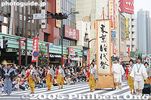
Tokyo Jidai Matsuri Banner and Tekomai geisha. From top to bottom, the banner reads, "Tokyo Jidai Matsuri." It marks the official and real start of the festival parade. The first Tokyo Jidai Matsuri was held in 1989. 東京時代祭本旗The first Tokyo Jidai Matsuri was held in 1989. Slight changes in the festival have been made since. Instead of two oiran courtesans, there is only one now. And at the end of the parade, the Asakusa Revue of showgirls used to be the anchor. But they are now gone.
東京時代祭本旗、手古舞
|
|
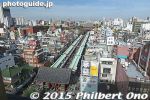
Bird's eye view of Asakusa with Kaminarimon Gate (big red lantern) and Nakamise arcade.
|
|
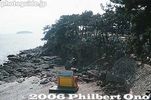
Rabbit Island
|
|

In front of Tokushima Station
|
|
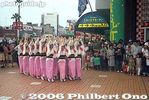
Pre-festival warm-up performance.
|
|
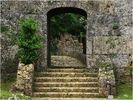
Rear Gate. Most visitors will enter through this gate to the castle, as it is closest to the parking and ticket sales. Photo copyright 2009 Michael Lynch.
|
|
|

Start of Kusatsu Jidai Gyoretsu Procession 草津時代行列
|
|

Entrance to Urakuen GardenThis garden has a few tea houses including one called Jo-an, a National Treasure. THe garden is close to Inuyama Castle and worth a visit. Admission 1,000 yen.
有楽苑
営業時間 9:00〜17:00(3/1〜7/14 ・ 9/1〜11/30)
9:00〜18:00(7/15〜8/31)
9:00〜16:00(12/1〜2/末日)
休日 無休 入場料 大人1,000円(呈茶別500円)
〒484−0081
愛知県犬山市御門先1
TEL 0568(61)4608
交通 名鉄犬山線犬山遊園下車徒歩7分
|
|

Bamboo torches and bamboo broomsThe bamboo torches is filled with kerosene and plugged with cotton cloth. They are used to set the hill afire. The bamboo brooms are used to spread the fire or extinguish it. The brooms burn up by the end of the festival.
|
|

Dickhead hat. Actually, I don't know what they call it, but that's what I call it.
|
|

Shirakawa-go 白川郷
|
|

Wada House, Shirakawa-go
|
|

Musashimaru at the entrance
|
|

Entry road to Ainokura village. Bus stop shelter on right.
|
|
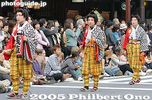
Tekomai geisha existed since the Edo Period. They served as side entertainment at festivals. They only sing traditional chant-like songs called kiyari originally sung by lumberers hauling wood. 手古舞These tekomai did not sing, so they might not be real. When they sing, they hold a fan to their mouth.
手古舞
|
|
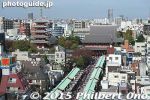
Green roofed Nakamise path to Sensoji temple in Asakusa.
|
|
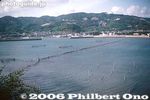
View from Rabbit Island
|
|
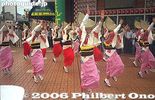
This was in front of a dept. store near Tokushima Station.
|
|
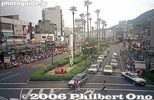
Shinmachi-bashi road in front of Tokushima Station 新町橋通りIt was Awa Odori time.
|
|
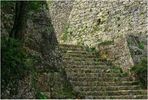
Stone Stairs. They lead to the 2nd enclosure. Visitors should wear sturdy walking shoes, as the stone-lined pathways and stairs can be very difficult to walk on without twisting an ankle. Photo copyright 2009 Michael Lynch.
|
|

Second torii
|
|
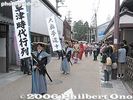
Kusatsu Shukuba Matsuri is held on April 29 to celebrate Kusatsu's history as a stage town on the Nakasendo and Tokaido Roads. The main highlight is this Kusatsu Jidai Gyoretsu procession from 11:45 am to 2 pm. This is the Tokaido Road.
|
|

Urakuen Garden水琴窟
|
|

Bamboo torches and bamboo broomsThe bamboo torches is filled with kerosene and plugged with cotton cloth. They are used to set the hill afire. The bamboo brooms are used to spread the fire or extinguish it. The brooms burn up by the end of the festival.
|
|

Carving daikon. Anybody can join in and carve. 大根削りLater to be auctioned off.
|
|

Musashimaru greets the crowd
|
|

Way to Ainokura.
|
|

Tekomai geisha costume is partially masculine with trousers instead of skirts. Their right shoulder is "exposed" showing a flower design. They carry a red paper lantern imprinted with their names and use their right hand to drag a wand."Asakusa" is written on her lantern. 手古舞
|
|
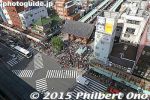
Kaminarimon Gate (big red lantern) and intersection in Asakusa.
|
|
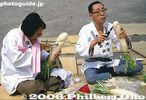
Carving daikon (old photo). These men were really good at carving the daikon.
|
|

Boat to Rabbit and Monkey islands (no longer in service)
|
|

Sculpture of Awa Odori dancers on mailbox
|
|
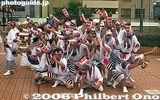
They performed in the afternoon.
|
|
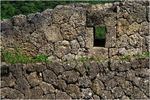
Gun Port. At several locations along the North walls of the castle, gun ports may be seen, where sentries could repel invaders. Photo copyright 2009 Michael Lynch.Many visitors are surprised to learn that firearms were in existence in the 14th century.
|
|

You wash your mouth hands here. Built in 1940 by Japanese living in the US. 大手水舎
|
|

Kusatsu Shukuba Festival, Shiga Pref. 大奥夢道中
|
|

Urakuen Garden tea ceremony house
|
|

Bamboo torchesThe bamboo torches is filled with kerosene and plugged with cotton cloth. They are used to set the hill afire.
|
|

Mansion of Mitsui Hachiroemon, one of the museum's must-see buildingsFounder of the Mitsui zaibatsu.
|
|

Hawaii's last sumo wrestler shakes hands.If he were married, his wife would be beside him.
|
|

What you see first is a big parking lot for tour buses. Then you see the hordes of tourists.
|
|

TumulusCherry trees are at the top.
|
|

Tekomai geisha
|
|
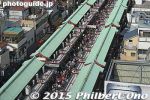
Nakamise
|
|
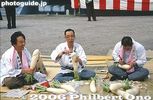
Carving daikon. Since some activities are conducted on the ground, the festival is also called Jibeta (Ground) Matsuri.Once upon a time, the festival was still mostly a local event with much fewer people.
|
|

Sculpture of Awa Odori dancers
|
|

Tokushima's Awa Odori originated in 1587 to mark the completion of Izan Castle in Tokushima (formerly called Awa Province). The castle lord allowed the people to celebrate and they danced the night away.
|
|
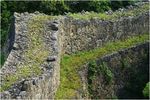
Terraced Walls. A view looking from north to south standing at an elevated point along the inner castle walls. Photo copyright 2009 Michael Lynch.
|
|

Gate built in 1934. 神門
|
|

Kusatsu Shukuba Festival, Shiga Pref.
|
|

Inside Jo-an tea ceremony house, a National Treasure
|
|

The deer have no idea what danger they are in...
|
|

Inside Mitsui Hachiroemon mansion
|
|

Musashimaru right after I shook his hand.
|
|

Ainokura monument
|
|

Museum of Aeronautical SciencesThe museum is right at the end of the runway of Narita International Airport.
|
|
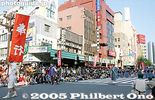
Magistrate Procession 奉行
|
|
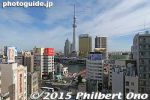
Tokyo Skytree
|
|
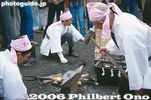
Forging a steel phallus (old photo)The demon living in the vagina of the women bit the man's phallus each time. So one guy made a steel phallus and the demom broke his teeth.
|
|

Rear view of a dancer
|
|

Sculpture of Awa Odori dancer
|
|

Three Sacred Sites. The South enclosure contains three Utaki (sacred sites), all within a small area, as seen by the signs in this picture. Many Okinawans come to worship at these Utaki and make offerings. Photo copyright 2009 Michael Lynch.From the high ground to the left of this scene, you may be able to see Kudaka-Jima, where locals believe the first Okinawans originated.
|
|

Back view of second torii
|
|
|
|

Jo-an tea ceremony house, a National Treasure. Built in 1618 by Oda Uraku, one of the greatest tea ceremony masters and younger brother of warlord Oda Nobunaga.Jo-an is one of Japan's three most famous tea ceremony houses. 如庵
|
|

Water bagsThe third item the volunteer firemen carry are water bags. The water bag is filled with water weighing 20 kg or so. A nozzle is also attached. It is used to extinguish the fire.
|
|

View of Ainokura which is also a National Important Traditional Townscape Preservation District (重要伝統的建造物群保存地区).
|
|

Signboard for retirement ceremony at entrance.It reads "Musashimaru, Intai Danpatsu Hiroo Ozumo" which means "Musashimaru Topknot-Cutting and Retirement Sumo Exhibition."
|
|

Old YS-11 prop plane.
|
|

Kusatsu-juku was the fifty-second station on the Tokaido Road (following Ishibe-juku) and the sixty-eighth station (following Moriyama-juku) on the Nakasendo Road. During the Edo Period, Kusatsu was an important post town at the crossroads of both roads.The roof is shaped like a Honjin lodge, with a gate. 草津駅
|
|

Musa-juku was the sixty-sixth of the sixty-nine stations or shukuba post towns on the Nakasendo Road. It is the seventh Nakasendo station in Shiga (following Echigawa-juku in Aisho). MAPMusa was one of ten Nakasendo stations in Shiga. There is very little left. Near Ohmi Railways Musa Station, a short ride from Omi-Hachiman.
|
|

30-min. delay from Helsinki to Kuusamo... 出発30分の遅れKuusamo, the site of the annual Kuusamo Nature Photo festival I was invited to, is in northeastern Finland near the Russian border (see map). After spending a few days in Helsinki, I took this plane to Kuusamo taking about 70 min. Finnair flies from Helsinki to Kuusamo usually once a day. By car, it's about 800 km.
This day (Sept. 8, 2005), we stood in line at the gate, gave our boarding passes, and boarded a bus that would take us to the plane, a Boeing MD-82.
After standing and waiting for some minutes in the bus, they announced that they had to change one of the tires of the plane, so the flight would be delayed by 30 min. We all went back into the terminal building and waited. Of course, no one complained. We would rather fly in a safe plane. I wonder why they waited until the last minute to inspect the tires? Shouldn't they have inspected the tires the day before??
It's hard to see in this photo, but the left-most rear tire was indeed replaced. It looked new (shiny black) compared to the tire next to it.
ネイチャーフォトの写真まつりの開催地クーサモは、フィンランドの北東にある。ヘルシンキからクーサモへ毎日一便(約70分)が飛んでいるが、この日、飛行機を乗るところになんと左のタイヤの交換が必要という知らがあってターミナルビルへ戻されて30分を待った。勿論、安全が第一で誰も文句を言わなかった。この写真で見づらいが、確かに一番左のタイヤが新品だった(艶があった)。
|
|
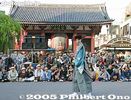
A magistrate (bugyo) in Edo could be a regional governor or government minister.
|
|
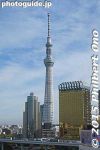
Tokyo Skytree
|
|

Tokushima Awa Odori dancer
|
|
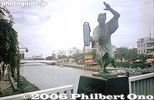
Sculpture of Awa Odori dancer
|
|
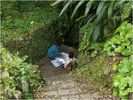
Sacred Well. There are three spring-fed wells within the castle. This one is located in the West enclosure and is also a sacred site where people make ritual offerings. Photo copyright 2009 Michael Lynch.The woman on the left gave consent to take a photo after helping her down the rough, stone stairs.
|
|

Aizu-Wakamatsu Station 会津若松駅
|
|

Marker and side road to Lord Gamo (Gamoh) Ujisato's gravesite. Near Aizu-Wakamatsu City Hall. Gamo Ujisato (1556-1595) was a feudal lord from Hino, Shiga Pref. He built Tsurugajo Castle and named the town Wakamatsu, after a place in his hometown.
|
|

Entrance to Iimoriyama Hill, site of the Byakkotai "White Tiger" Battalion gravesite. In 1868, a unit of teenage warriors called Byakkotai (White Tiger Battalion) fought against the Emperor-backed Imperial forces encroaching their domain of Aizu
|
|

Imperial crest on gate door
|
|
|

The 25th Asakusa Yabusame horseback archery was held on April 21, 2007 at Sumida Park.
|
|

Itoh Chube'e Memorial House (Itoh Chube'e Ki'nenkan). Itoh Chube'e (1842-1903) was the founder of Itochu Corporation and Marubeni, two of Japan's largest trading companies, in 1858. MAPThis house displays his former residence and some of his possessions. A short walk from Toyosato Station, the house is open to the public on Tue., Thu., and Sat. Free admission.
|
|

Gokasho is famous for the grand, old homes of wealthy Omi merchants. Three of them are clustered together for us to visit inside. They are the former residences of Tonomura Uhee (外村 宇兵衛), Tonomura Shigeru (外村 繁), and Nakae Jungoro (中江
|
|

Sugawara house from Tsuruoka city, Yamagata Prefecture. In heavy snow, the front window was used as the door.
|
|

Way to Mogusaen Garden
|
|
|
|

Bus to Taba. The bus runs from Okutama Station in Tokyo. It is the only public transportation link with the village.
|
|

Bon fire site
|
|

Sando worship path to Taishakuten temple. Shibamata is in Tokyo's Katsushika Ward bordered by the Arakawa River in the west and by the Edogawa River in the east.
|
|

"Watakushi, umare mo sodachi mo Katsushika, Shibamata desu..." (I was born and raised in Shibamata, Katsushika Ward) If this opening line sounds familiar, you must be one of the many ardent fans of Tora-san movies.
|
|

Standing room only at Wakamiya Shrine
|
|
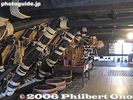
The bottom ends of these beams are pegged into a point (komajiri) resting on another cross beam. Wada House, Shirakawa-go
|
|

Gate to Takayama Jinya
|
|

Front of Yoshida Chiaki's home in Niigata (formerly Niitsu) which I visited in Nov. 2007. Yoshida Chiaki composed a song called "Hitsuji-gusa" (Water Lilies) whose melody was used for the song "Biwako Shuko no Uta" (Lake Biwa Rowi
|
|

Former Hatano residence and birth home of Yoshida Togo 旧旗野邸 (吉田東伍生家)
|
|

Farmer's house
|
|

Musashigawa stablemaster (former Yokozuna Mienoumi) in the entrance hallInside the entrance hallway, there was a long table on the left side with ribbons which served as name tags for distinguished guests. Musashigawa is the name of Musashimaru's sumo stable.
|
|

View of Ainokura from a hill
|
|

Inside the YS-11
|
|

Magistrate Procession 奉行
|
|

Condensed mirror of Awa Odori dancerAibahama Park in the distance.
|
|
|
|
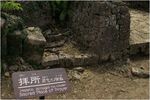
Utaki. A closeup view of a place of worship. Incense is sometimes burned and coins placed in the stone container centered within the utaki stone walls. Photo copyright 2009 Michael Lynch.
|
|

Aizu-Wakamatsu Station 会津若松駅
|
|

Ujisato was married to Oda Nobunaga's second daughter Fuyuhime. He died at age 40. One theory says that he was poisoned by Toyotomi Hideyoshi. Entrance to Lord Gamo Ujisato's gravesite within Kotokuji temple in Aizu-Wakamatsu, Fukushima..
|
|

The Byakkotai were outnumbered and forced to retreat. Twenty of them escaped to Iimoriyama Hill where they saw what looked liked a burning Tsurugajo Castle. Photo: Pay a small fee to take the escalator up the hill. Or climb up the steps for free.
|
|
|
|

Parallel to Sumida River, the archery course is straight and narrow, stretching from the Tobu Line bridge to Kototoi Bridge.
|
|

Entrance to Itoh Chube'e Memorial House
|
|

Gokasho was home to many Omi merchants who plied up and down Japan during the Edo Period to sell and trade their wares. They became quite successful selling medicines, lacquerware, sake, etc.Wall of former home of Omi merchant Tonomura Shigeru (1902-1961) (外村 繁邸).
|
|

Ceiling
|
|

Decorating the path to Mogusaen Garden
|
|

Tea ceremony house
|
|

Deer on the hill
|
|

The Tora-san "Otoko wa Tsurai Yo" (It's Tough Being a Man) movie series was played by the late Atsumi Kiyoshi. Tora-san is Japan's most lovable drifter and lovelorn on the silver screen. Forty-eight movies in this series were produced from 1969 to 1995. Katsushika-ku is where the Tora-san Museum is.
|
|
|

Packed path to Wakamiya Hachimangu Shrine
|
|

Entrance to Takayama Jinya. A Jinya was a regional government office during the Edo Period. The Tokugawa government dispatched magistrates to administer the region. About 60 jinya existed and only this one survives.
|
|
|

Rear view of birth home of Yoshida Togo who was a famous geographer of Japan who compiled an encylopedia of Japanese place names. His son was Yoshida Chiaki who composed the melody of the song "Biwako Shuko no Uta" (Lake Biwa Rowing Song).
|
|

Entrance hall is clogged up by a side show of hula.
|
|
|
|
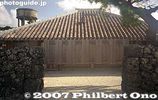
Okinawan house, Taketomi. Taketomi is a National Important Traditional Townscape Preservation District (重要伝統的建造物群保存地区).
|
|

Magistrate Procession. Bowing to Asakusa Temple.
|
|
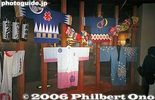
Awa Odori Kaikan museumHappi coats worn by Awa Odori dance troupes.
|
|

Free Awa odori lessons.
|
|
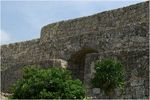
Second Enclosure. A view of the archway and stone construction from inside the 2nd enclosure, looking East. Photo copyright 2009 Michael Lynch.
|
|

Aizu-Wakamatsu Station 会津若松駅
|
|

Entrance doors to Lord Gamo Ujisato's gravesite within Kotokuji temple which is a Zen temple of the Rinzai Sect.
|
|

In despair, the boys decided to kill themselves rather than die in the hands of the enemy. Photo: Escalator to go up Iimoriyama Hill.
|
|

On the weekends, free shuttle bus to the tulip festival from Hamura Station West Exit. It's short bus ride.
|
|
|
|

The course has three targets which the archers will shoot arrows at.
|
|

Entrance to Itoh Chube'e Memorial House
|
|

Former home of Omi merchant Tonomura Shigeru (外村 繁邸). MapTonomura Shigeru (外村 繁), Tonomura Uhee (外村 宇兵衛), and Nakae Jungoro (中江 準五郎)
|
|

Kitamura house brought from Hadano, Kanagawa
|
|

Long uphill slope will keep you panting until the garden entrance.
|
|

Inside tea ceremony house
|
|

Volunteer firement gather before going up the hill.The hill set alight by 300 volunteer firemen from all over Nara and prefectural workers who climb up the hill.
|
|

Statue of Tora-san in front of Shibamata Station. Posed like he's going to the station for another faraway trip...
|
|

Sando worship path to Taishakuten temple
|
|

Prayers to the Kanamara Boat portable shrine かなまら舟神輿 神輿御霊入れ式Before the portable shrine is taken out to be paraded around town, the god of the shrine must be transferred to it. This is what the head priest is doing.
There are three portable shrines (called mikoshi). The Kanamara mikoshi (the original portable shrine), Kanamara-bune mikoshi (shaped like a boat), and Elizabeth mikoshi (pink giant). All three are carried during a procession around town. The Elizabeth mikoshi is carried by she-males. ("New half" in Japanese. Go ahead and laugh if you want.)
|
|

For 176 years or 25 generations, the building housed government administrators, accountants (rice tax collectors), and the police.
|
|

Front gate of Yoshida Chiaki's home
|
|

A room in the birth home of Yoshida Togo
|
|

Musashigawa Stable wrestlers greet visitorsIncludes Miyabiyama and Musoyama.
|
|

Bird's eye view of Ainokura 相倉展望台
|
|
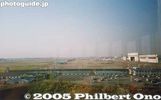
Museum's observation deck.
|
|
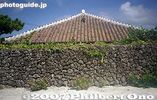
Okinawan house and rock wall, Taketomi
|
|

Year 628: Two fishermen brothers find a golden Kannon buddha statue in Sumida River. The two fishermen were Hinokuma no Hamanari and Takenari. A wealthy landowner named Hajinomatsuchi heard about the statue and told the brothers about its religious value.He then built a small temple for the statue and the brothers converted to Buddhism. The temple eventually became today's Sensoji Temple (also called Asakusa Kannon Temple). Because of the temple, Asakusa developed and prospered and the two brothers and landlord are considered to be the founders of Asakusa.
Next to Sensoji Temple is Asakusa Shrine dedicated to these three men now deified. Asakusa Shrine holds the annual Sanja Matsuri in May, one of Tokyo's biggest festivals. Three portable shrines dedicated to these three men are carried around the streets of Asakusa. "Sanja" means three shrines or gods.
檜前浜成(ひのくまのはまなり)・竹成(たけなり)の兄弟の網に一体の小さなご仏像がかかりました。
東京のあけぼの 浅草観音示現
|
|
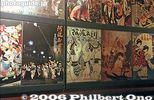
Awa Odori Kaikan museumAwa Odori publicity posters.
|
|

Lining up for the non-reserved spectator seats.
|
|

Family crest on door. (Not the Gamo crest.)
|
|

Escalator to go up Iimoriyama Hill. Their tombstones are on this hill near where they killed themselves. Their story has become legend.
|
|
|

Aizu-Wakamatsu Station at twilight
|
|
|

Raised dirt along the archery course.
|
|

Front garden
|
|
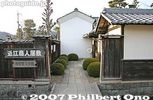
Entrance to former home of Omi merchant Tonomura Shigeru (外村 繁邸). Gokasho is also a National Important Traditional Townscape Preservation District (重要伝統的建造物群保存地区).
|
|

Kitamura house
|
|

Entrance to Mogusaen Garden
|
|

Volunteeer firemen and staff hike up the hills.
|
|

This is a pose when Tora-san goes to the Shibamata Station and he looks back to his sister Sakura who calls him.
|
|

The path is lined with shops.
|
|

Prayers to the Kanamara-bune mikoshi かなまら舟神輿Before the portable shrine is taken out to be paraded around town, the god of the shrine must be transferred to it. This is what the head priest is doing.
|
|
|

Inner garden. I met Yoshida Yuki (吉田ゆき), the niece of Yoshida Chiaki who showed me the house and a few materials. Flowers planted by Chiaki still grow in the garden.
|
|

Garden of the birth home of Yoshida Togo
|
|

Inside farmer's house
|
|

In the entrance hall, hula and Hawaiian music direct from Hawaii
|
|
|
|
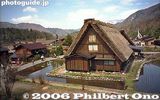
Shirakawa-go 白川郷
|
|
|

Bizan Ropeway 眉山ロープウェイ
|
|

The Awa Odori begins before dark.
|
|

Grounds of Lord Gamo Ujisato's gravesite within Kotokuji temple. Since Ujisato was a Christian lord, it is ironic that he be buried in a Buddhist temple in Kyoto and Aizu-Wakamatsu.
|
|

Byakkotai Gravesite. It is on a flat area which also has several other Byakkotai monuments including those from other countries.
|
|

Noh stage and the cherry tree used as the barometer for Tokyo's cherry blossom blooming condition.
|
|

Aizu-Wakamatsu Station
|
|
|

First, the horses, archers, and attendants parade along the entire course.
|
|

Front garden
|
|

Entrance to former home of Omi merchant Tonomura Shigeru.
|
|

Nihon Minkaen is an outdoor museum of traditional farm and merchant houses with thatched roofs. They have 25 homes from around Japan many were donated to the museum for preservation.
|
|

Steps to garden
|
|

Sacred torch arrives at the foot of the hill.The sacred torch is lit at Kasuga Taisha Shrine and brought to Nogami Shrine in a torch procession. It is a small shrine at the foot of the hill.
|
|

The first Tora-san movie came out in 1969 and over 40 more installments have been produced since then. It is entered in the Guiness Book of World Records as being the movie series with the most sequels.
|
|

Tora-ya
|
|

The shrine's head priest transfers the deity to the Kanamara Boat portable shrine (boat-shaped loaded with a phallus) かなまら舟神輿Before the portable shrine is taken out to be paraded around town, the god of the shrine must be transferred to it. This is what the head priest is doing.
|
|

Magistrate's (governor) office 御役所
|
|

Yoshida Chiaki's room on the 2nd floor.
|
|

Entrance to the Yoshida Togo Memorial Museum which exhibits various documents and personal effects of Yoshida Togo. Museum admission 300 yen. Closed Mon.
|
|

Another farmer's house
|
|

The retirement ceremony had a lot of Hawaiian touches. This was only the beginning.Hula dancers and live Hawaiian band from Hawaii.
|
|

Ainokura
|
|
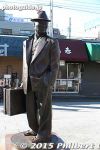
He will soon be accompanied by a statue of his sister Sakura.
|
|
|

Bizan Ropeway眉山ロープウェイ
|
|
|
|

View of Administrator's office from the veranda
|
|
|

Yasukuni Shrine, Torii and Haiden hall
|
|

Approach to the Byakkotai gravesite.
|
|

Byakkotai statue at Aizu-Wakamatsu Station
|
|

Wooden targets
|
|

JR Kusatsu Station in spring.
|
|
| 12734 files on 51 page(s) |
1 |
 |
 |
 |
 |
|